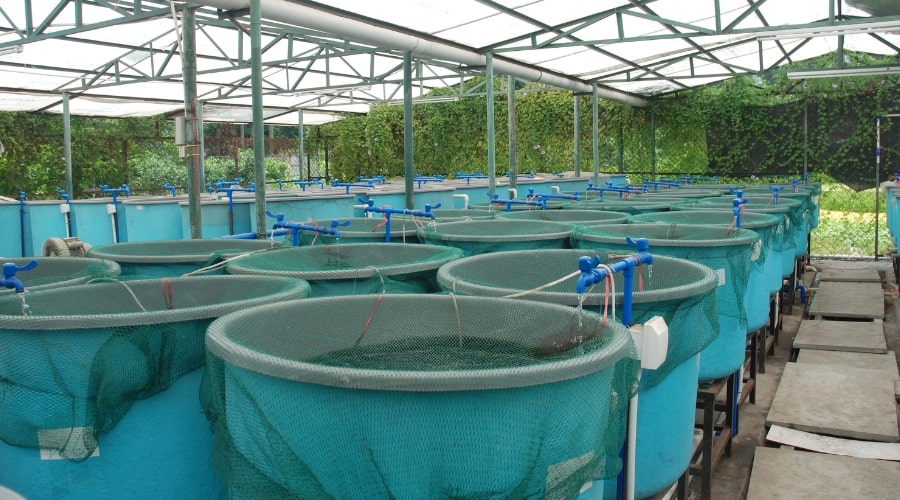Water quality directly impacts the health and growth of your fish. Poor water conditions cause stress, disease, and even mortality. Maintaining optimal water quality ensures better yields and a more profitable farm.
Key Water Parameters to Monitor
Regularly monitoring specific water parameters helps you maintain a healthy environment for your fish.
-
Dissolved Oxygen (DO):
- Fish need oxygen to survive and grow. Low DO levels can cause stress and lead to death.
- Ideal levels are above 5 mg/L, but specific requirements depend on the fish species [TO BE VERIFIED].
-
pH Levels:
- The pH measures water acidity or alkalinity. Extreme pH levels harm fish and hinder growth.
- Maintain a range of 6.5 to 8.5, depending on the species [TO BE VERIFIED].
-
Temperature:
- Water temperature influences metabolism and immune systems. Each species has an optimal temperature range.
- Use thermometers to monitor daily and avoid sudden fluctuations.
-
Ammonia and Nitrite Levels:
- Fish waste produces ammonia, which converts to nitrites and nitrates. High levels are toxic.
- Test weekly and ensure ammonia remains below 0.25 ppm and nitrites below 0.1 ppm [TO BE VERIFIED].
-
Turbidity:
- Cloudy water reduces sunlight penetration and harms photosynthesis in pond ecosystems.
- Use mechanical or biological filtration to address turbidity issues.
Maintaining Water Quality
Taking preventive steps keeps water quality stable and reduces the risk of fish loss.
-
Aeration:
- Use aerators or diffusers to maintain oxygen levels. Consider surface aerators for ponds or air stones for tanks.
-
Filtration Systems:
- Install mechanical filters to remove solid waste and biological filters to handle ammonia.
- Clean filters regularly to maintain efficiency.
-
Regular Water Changes:
- Replace 10-20% of the water weekly to dilute waste and toxins.
- Match the temperature and pH of the new water to avoid shocking fish.
-
Plant Management:
- Aquatic plants improve water quality by absorbing nutrients and providing oxygen.
- Avoid overgrowth, which can deplete oxygen at night.
Preventing Water Contamination
Contaminated water introduces pathogens and harms your fish farm ecosystem. Prevent contamination by managing external factors.
-
Source Water Quality:
- Test water sources like wells or rivers before use.
- Avoid using water with industrial pollutants or agricultural runoff.
-
Feeding Practices:
- Overfeeding leads to waste accumulation, affecting water quality.
- Provide only the amount your fish consume in 15-20 minutes.
-
Pond Design and Maintenance:
- Ensure proper drainage and sediment removal to prevent buildup.
- Use lined ponds to avoid seepage of harmful substances.
Monitoring Tools and Practices
Using the right tools simplifies water quality management.
-
Test Kits:
- Use kits to measure pH, ammonia, nitrites, and nitrates regularly.
- Calibrate tools often for accurate readings.
-
Digital Monitors:
- Consider digital sensors for continuous monitoring of critical parameters.
-
Logs:
- Keep records of water conditions and maintenance activities.
- Review logs to identify trends and take corrective action early.
Responding to Water Quality Issues
Act quickly if parameters fall outside the optimal range.
- If dissolved oxygen drops, increase aeration immediately.
- Address high ammonia or nitrite levels by increasing water changes and improving filtration.
- For pH imbalances, use approved chemicals to adjust levels gradually.
Maintaining water quality is an ongoing effort, but consistent attention ensures healthier fish and better results for your farm. Take the time to monitor and adjust regularly to keep your system thriving.


